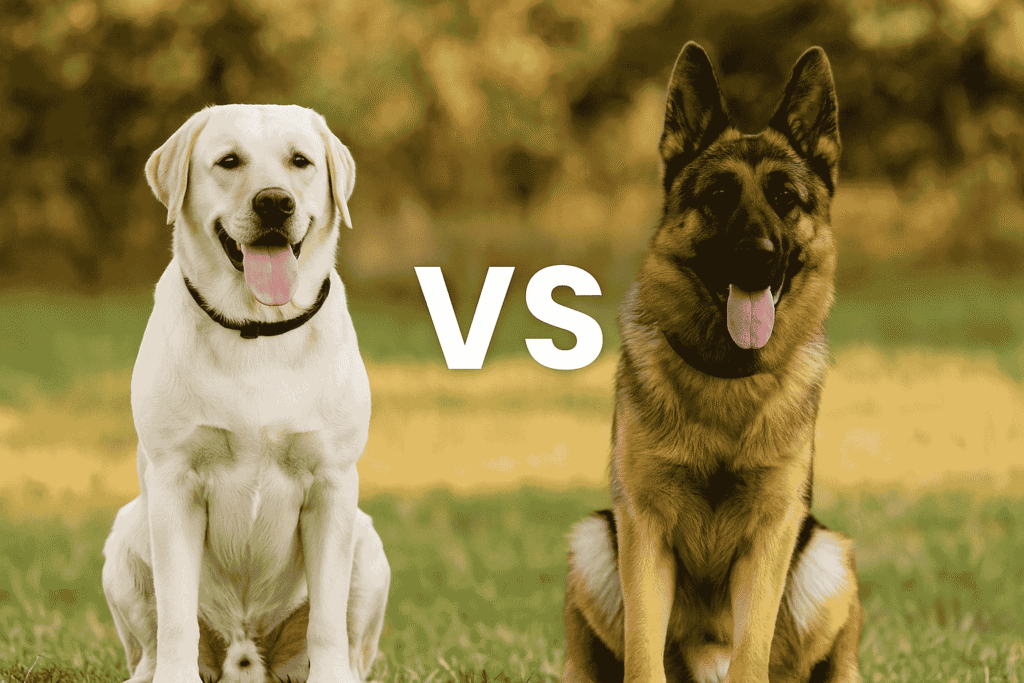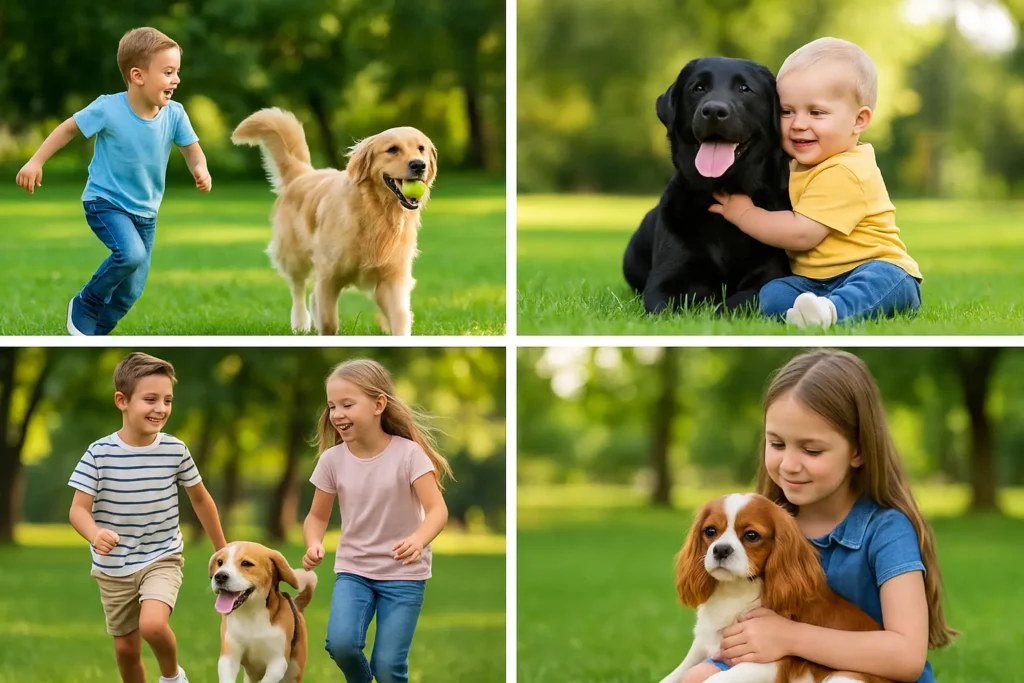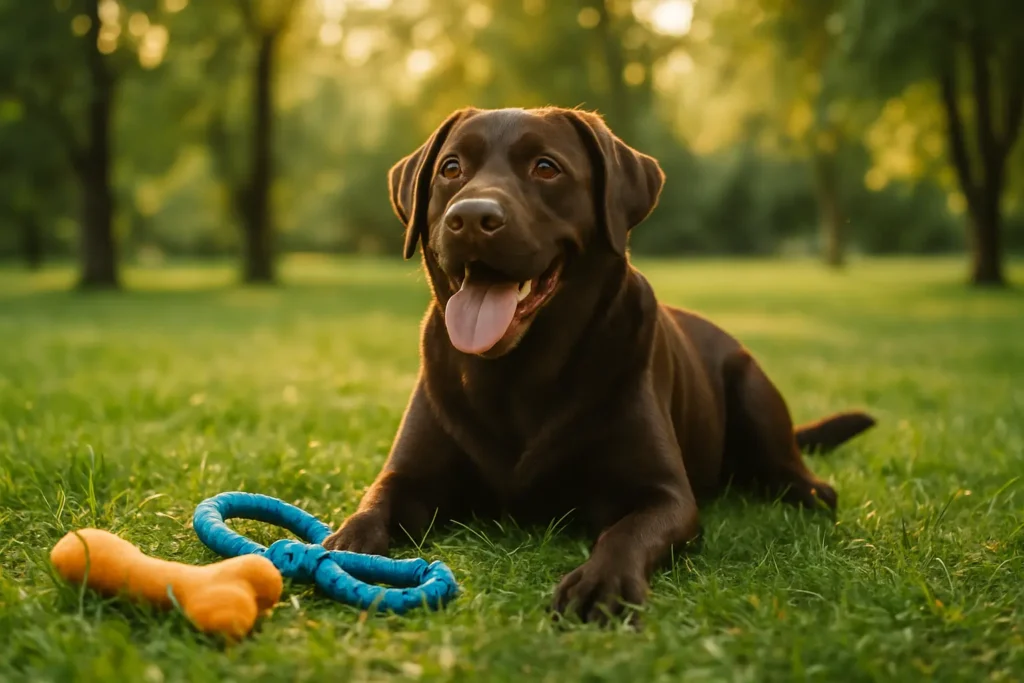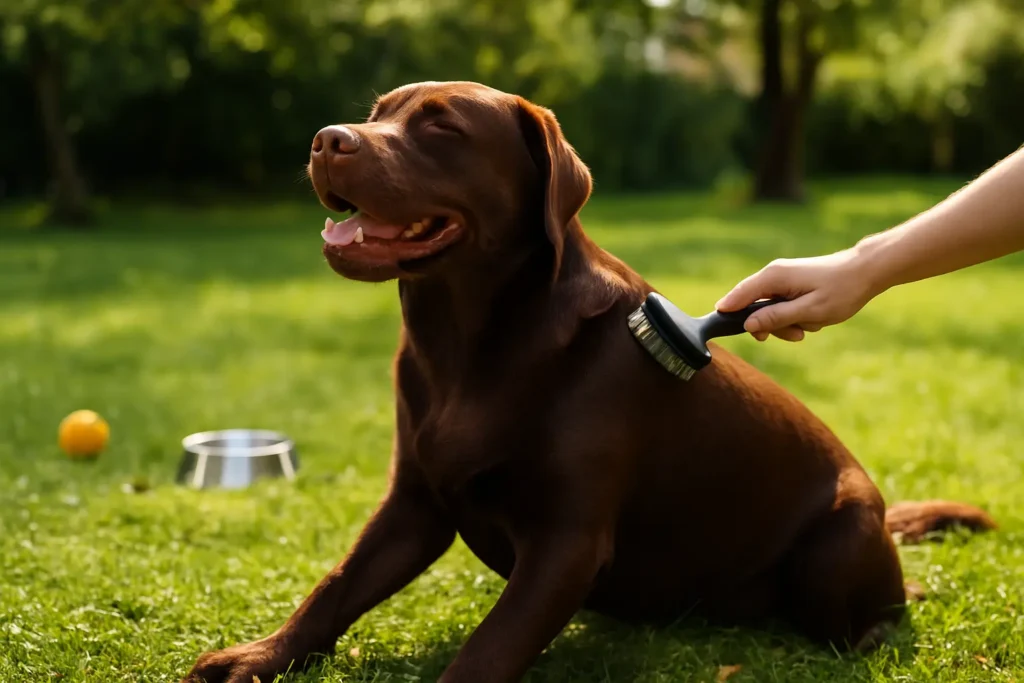Introduction
Welcoming a dog into your family is thrilling—but deciding between a Labrador Retriever and a German Shepherd can feel overwhelming. That’s exactly how my wife and I felt before we brought home our first fur babies. When Bella the Labrador entered our lives, she was playful, social, and instantly bonded with our niece and nephews. A few years later, our German Shepherd Max joined us—intelligent, focused, and deeply protective. Both changed our lives, but in very different ways.
In this guide, I’ll walk you through how Labradors and German Shepherds differ in temperament, energy, grooming, training, and more—so you can choose the breed that fits your lifestyle and your heart.
Temperament & Personality: Which Breed Matches Your Family’s Vibe?
Labrador Retriever
- Friendly & Social: Labs are the overgrown puppies of the dog world. They greet everyone with a wagging tail.
- Gentle with kids: My niece threw a full slice of pizza at Bella—she gently pawed it back without protest.
- People-oriented: Perfect for social households.
German Shepherd
- Smart & focused: Max learned “sit — look at Texas” faster than most basic commands.
- Loyal & alert: He’s less likely to befriend every stranger—makes excellent watchdogs.
- Calm in familiar environments: Once he knows you, his loyalty is unwavering.
Real Insight: If you like instant smiles and open friendliness, the Labrador is your go-to. Prefer structure, intent, and protective instincts? The German Shepherd might be the better match.
German Shepherds are known for their loyalty and sharp intelligence—qualities we explored in depth in our post on 10 Things You Should Know Before Getting a German Shepherd.
Energy Levels & Exercise Needs: Who Keeps Pace With Your Family?
Labrador
- Moderate to high energy; loves swimming, fetch, and roughhousing.
- Needs around 1–2 hours of daily physical activity.
- Great with active families that enjoy outdoor adventures or casual playtime.
German Shepherd
- High stamina paired with intelligence.
- Thrive on structured interaction—training, agility games, puzzle toys.
- Require both physical and mental exercise daily for balance.
Tip: For our busy household, alternating between park visits (for Daisy the lab) and training sessions (for Max the Shepherd) ensured everyone got the activity and structure they needed.
Trainability & Behavior: Which Breed Is Ideal for First-Time Families?
Labrador
- Highly motivated by treats and praise.
- Excellent focus for short sessions—bounce back easily from mistakes.
- Great start for families new to dog training.
German Shepherd
- Remarkably intelligent and eager to work.
- Can learn advanced commands and perform roles beyond companionship.
- May develop strong preferences (e.g. leash walking style) if not trained early.
Personal Advice: Labs thrive with consistent positivity. GSDs excel with structured, engaging training—when trained properly, they become exceptional all-around pets.
Grooming & Care: How Much Upkeep Is Involved?
Labrador (Short-Coat)
- Brushing: 1–2 times a week; daily during shedding seasons.
- Bathing: Every 6–8 weeks—or sooner if muddy.
- Tools: Rubber glove brush, wipes, teeth cleaning kit.
German Shepherd (Double-Coat)
- Brushing: 2–3 times weekly, daily during seasonal coat blows.
- Deshedding tools: Effective for removing dead undercoat.
- Bathing: Every 8–12 weeks to maintain natural oils.
Note: Max sheds enough to fill a pillow every spring—keeping tools handy transformed our vacuum routine into manageable upkeep.
Good with Kids? Which Breed Tolerates Family Chaos Better?
Labrador
- Exceptionally patient with toddlers and energetic older kids.
- My niece often climbed on Bella—she patiently licked and nudged her back into play.
German Shepherd
- Protective and alert—not always as tolerant with small children unless well-socialized.
- Our Max takes a few warm-up visits with the kids before opening up—then moves protectively in play.
Advice: Early positive exposure to children is key for either breed. For welcoming younger kids, Labs often integrate faster; GSDs bond deeply but selectively.
Living Situations & Lifestyle Fit: Which Dog Matches Your Space?
| Condition | Labrador | German Shepherd |
| Apartment Living | Adapts well if exercised | Needs more space and daily walks |
| Yard/Large Space | Enjoys open play | Benefits from area to patrol and train |
| Travel/Car Safety | Calm on rides with breaks | Collaborative and alert |
| Seniors/Quiet Home | Soft and gentle | Sometimes overly protective |
Example: Our visiting grandparents warmed up quickly to Bella—but found Max’s watchful nature comforting rather than overbearing. GSDs often sense protective roles early and adjust to a home’s social structure.
Health & Lifespan: What to Expect Over the Years
- Labrador: 10–12 years, prone to hip/joint issues, weight sensitivity.
- German Shepherd: 9–13 years, common joint and spinal concerns, skin conditions possible.
Tip: Maintaining weight, joint support (like glucosamine supplements), and vet screening can make a big difference. We started Max on a joint supplement before age 7 to preserve elasticity.
Financial & Time Commitment
| Category | Labrador (Moderate) | German Shepherd (Higher) |
| Puppy Cost | $800–1,200 | $1,200–1,500 |
| Monthly Food Cost | $60–80 | $80–100 |
| Grooming Tools | Brushes, wipes | Deshedding rake, slicker, clips |
| Training Costs | Basic gear, treats | Possible advanced gear/equipment |
| Health & Vet Care | Moderate | May need more preventive care |
Personal Note: Labs helped us ease into pet ownership; GSDs required more structure—but rewarded with loyalty and partnership.
Decision Checklist: Which Breed Fits Your Family?
- Prefer go-with-the-flow energy and sunny personalities? → Lab
- Want focus, structure, and protective intelligence? → GSD
- Ideal with kids splashing in the pool? → Lab
- Prefer calmer, purpose-driven adults? → GSD
Real Pet Parent Experiences
- Bella (Labrador): Belongs to every child, neighbor, or stroller she meets. Lives to chase tennis balls and sneak treats.
- Max (German Shepherd): Calm behind the door, alert in the backyard, and protective of our home—without being aggressive.
- Julie’s Lab rescue became an emotional support dog within weeks.
- Jerry’s GSD mix learned tracking and returned home lost after hiking trips.
FAQs from Families Choosing Between These Breeds
- Which breed is lower maintenance?
- By grooming: Lab
- By grooming: Lab
- Which is better around children?
- By nature: Lab (if early socialized)
- By nature: Lab (if early socialized)
- Are German Shepherds good for new dog owners?
- Yes, with consistent positive training and structure.
- Yes, with consistent positive training and structure.
- Can Labradors guard a home?
- Not naturally protective—but will alert you if strangers get too close.
- Not naturally protective—but will alert you if strangers get too close.
- Do German Shepherds need more space to roam?
- They benefit from a yard or structured walks, but will do fine in apartments with enough routine.
Conclusion: Both Breeds Can Be Wonderful Family Dogs
Both Labradors and German Shepherds bring love, loyalty, and joy—but in slightly different packages. Labs are sunshine, patience, and open friendliness. German Shepherds offer purpose, devotion, and intelligence.
Think about your family’s routine, energy, and space. If you’re playful and social, a Lab may thrive best. If you’re structured, discerning, and active in training, a Shepherd might be your true match.
Next Steps for New Families
Explore our breed-specific guides and grooming calendars for details on brushing, bathing, and care.
🧭 Ready to train? Start with our easy commands blog and new owner checklists.




